KINGSTONE ZIMUNYA & TAKUDZWA HILLARY CHIWANZA
FOR citizens of the ‘most literate country in Africa’, it is ironic how some Zimbabweans at times miss what is right in front of them, no matter how dope it is.
This is because of certain myths dominant in our society, some which this piece will debunk—because, in a number of instances, some people deliberately look away when presented with good creative content in front of them. Be it music, film, writing, painting, dance, et al.
Brilliant art (mostly from the creatives who are not ‘big’) is usually shunned and struggles to be universally embraced. If your art lacks eminence in mainstream spheres – or if not ‘trending’ – most willingly look away, citing inferior quality and other convenient but obsolete excuses.
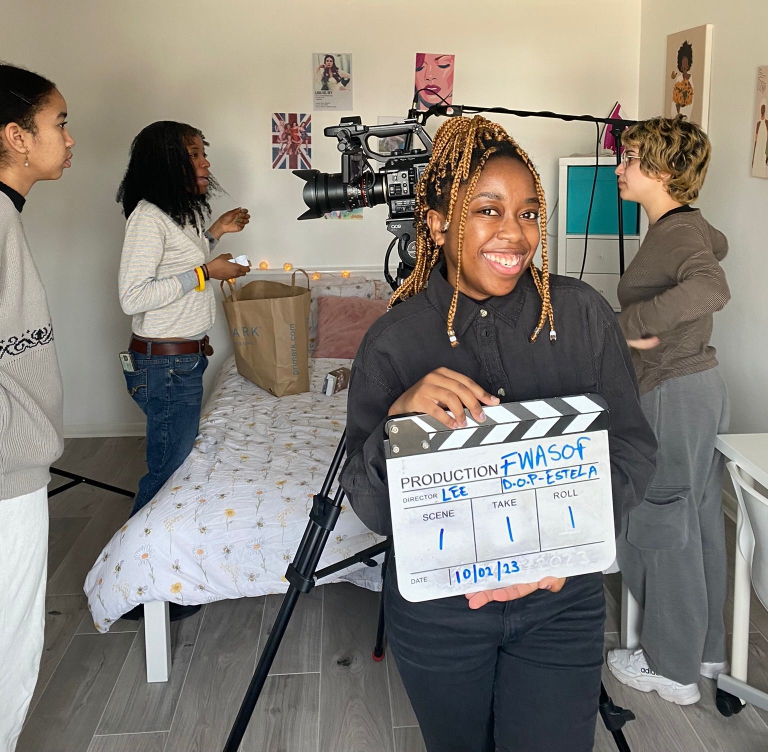 |
| Meet Lee-Ann Russell, a UK-based filmmaker [Image: Supplied] |
A lack of belief in our own creativity and our creatives.
For instance, consider the role of culture and the arts in the socioeconomic development of any given society. The potential to shape discourses and perceptions is infinite.
Yet, this role is constantly undermined, locally and globally.
In our context, the unwritten rule is woe to the arts. Partly because of the much-vaunted (and to others infamous) Science, Technology, Engineering, and Mathematics (STEM) initiative that was fervently propagated by Jonathan Moyo in his political heyday—educational policy in Zimbabwe slanted towards scientific and technological disciplines.
The arts languish in neglect and derision. Better to pursue an engineering degree.
Not the Bachelor of Arts degree. Neither psychology, sociology, music, film, history, anthropology, et al.
The withering arts.
Such a reality is fair, perhaps, considering how Zimbabwe is always in an unending descent. Trepid leadership; rapidly deteriorating infrastructure in all dimensions of the sociopolitical landscape; and the never-ending economic crises.
The humanities are not alluring enough. Scant jobs. Measly salaries there.
The option to become a civil engineer – or even an agronomist – becomes the only path to a ‘good life’.
So STEM finds some convenient vindication here: we do need as many engineers, technicians, biochemists, radiologists, doctors, and scientists we can get, right?
All that high-sounding talk on industrialization, modernizing the economy, and achieving a middle-income economy by a certain year.
Well …
A number of pressing questions then forcefully burst to the fore—the biggest being: What about the artistic disciplines, though? Is the creative industry entirely useless to our contemporary society?
Do people not consume copious amounts of music and movies in all their waking moments?
Do people not endlessly cite [correct and incorrect] quotes of famous authors in history? Do they not succumb to the devastating allure of creative ads/commercials?
Who creates these cultural products; this art?
What about the indispensable centrality of the arts and humanities?—and of the contextually relevant cultural products birthed by our own creative talents?
Introduction – Zimbabweans’ contempt for their own cultural products: Experts at shunning their own art
It is a common secret: Zimbabweans – wittingly and unwittingly – shun the arts as an academic discipline; and treat artists with palpable contempt – you’d think art is irrevocably detrimental to our ‘most literate’ brains.
Art is a deleterious poison. It must not be allowed to flourish. Its growth must be stymied whenever such opportunity arises. No qualms. Crush. Crush. Crush.
And, yet, we revere foreign artists and their globally-renowned artistic exploits music, visual art, writing, fashion, and – most painfully – film.
Yep, film.
The reality seems immutable and this is always a given—Zimbabweans worship cultural products from the global north countries (in hopes to mimic the lifestyles they see on TV and smartphones). And some literate citizens then treat our own art with scant regard and sheer disdain.
Our own art? Our own films? Our gaze at them is one of willful scorn.
We gleefully, and with intense emotion, consume Hollywood, Nollywood, Bollywood, South African, Korean, Europeans, and even Mexican cultural productions (telenovelas anyone?); and in the same breath, complain bitterly that the last good films in Zimbabwe were made in the 90’s.
As if new film content in Zimbabwe isn’t being made.
Such a shame. We are a country full of walking contradictions. Painstaking paradoxes animated.
Ask the economists. They will explicate in great detail how every industry is reeling from our perennially ailing economy. Which is fair and fine. Understandable. It is a solid fact of our dreary lived realities.
But we should never use that as an excuse to throw disrespect at our own creatives who are giving their heart and soul to tell our own stories for the better.
However, for the curious team at ZimSphere, this refreshingly long read as part of our ZimFlix Focus section rightly exists as the hopeful antidote to this pernicious malaise.
We flatly refuse to believe that most Zimbabweans are not producing (and consuming) their own stories simply because ‘the productions are bad.’
At some point, the ‘inferior quality’ trope – a manifestation of insidious inferiority complexes – has to be abandoned, supplanted by curious enthusiasm for our organic art.
There is obviously a dearth of passionate and close attention to the brilliance of Zimbabwean filmmakers – local and abroad. Not enough is being done by the purveyors and consumers of art to shine a light on established and budding creatives in equal measure.
It might come off as a tad rough to say as a consumer of art, you’re just not looking hard and well enough for good Zimbabwean filmmakers.
Let’s do it for you, then. We hope you allow us to do so with this lengthy write-up (it’s worth it, we sincerely promise).
***
Enter Lee-Anne Russell – all about artistic brilliance and the importance of pursuing one’s passions |
ZimSphere had the privilege (and we don’t take it lightly) of having insightful conversations with the 25-year-old filmmaker Lee-Anne Russell from her home in Portsmouth, United Kingdom; where she is now deftly navigating the realities of adulthood while at the same time professing her indefatigable commitment towards producing compelling artistic and cultural products – towards creating good film content.
For the few who may have encountered Russell’s creative incursions, the beginning of her journey will point to when she graduated from the University of Portsmouth in July 2023, with a Bachelors’ Degree in Media and Digital Practice. But her journey to get to that point started off seven years ago—and 12,000 kilometres away from her current lodgings.
Lee-Anne Russell was born and raised in Bulawayo, Zimbabwe, and like every girl who grew up in the 2010s, she was inescapably raised in front of a television screen. Always a given reality for urbanites.
For Russell, though, her undying love for television transcended the often-oscillating celebrity crushes and the attendant aesthetic inspirations and admirations. She was more intrigued by what goes on behind the scenes.
She was intrigued by the specifics that unfold behind the scenes.
How do these moving pictures appear on TV? was certainly a question that frequently punctuated her curious young thoughts whenever the ubiquitous prominence of the television screen loomed large in different facets of life.
In secondary/high school education, there is a widely-held (but misleading) perception that every other bright student must pursue science subjects for optimal academic and life success. If they do not fancy the rigorous mechanical and technical aspects of those subjects, commercials at the very least. Just be wary of the arts, though. Untested waters with no desirable material benefits later on.
So, like most outstanding students in this country, Russell found herself doing science subjects for her Advanced Level studies, harbouring the predictable ambition of becoming a chemical engineer.
Regardless, Russell kept feeding her creative passion. Tirelessly so. In 2017, she directed a school play titled Queen of Persia, and in the process, broke a protracted 15-year drought of plays at her school.
Massive milestone, small as it seemed. Because that was the first instance of her undeniable brilliance—and the first step towards a career in filmmaking.
Her unquenchable eagerness for creative brilliance that brings to life exciting cultural products could not be dwarfed by the demands for technical precision that science subject are famed for.
 |
| Where it all began — Lee-Ann Russell directing a school play in 2017 [Image: Supplied] |
Russell’s confirmation for a career pivot came in 2018, when the critically-acclaimed Black Panther was released.
She went to the premiere of the Marvel blockbuster with her sister and friend, dressed up in ‘African attire’ to match the atmosphere and aura of this piece of film excellence.
The two-hour movie altered the course of her life forever in a clear manner; as Ryan Coogler’s fantabulous direction inspired her to take the bold leap from chemical engineering to filmmaking.
 |
| "Wakanda Forever" — The inspiration [Image: Supplied] |
Decisive steps fearlessly taken: Russell’s journey begins
“After the movie, I came to terms with a truth I had been too scared to admit. Film was my passion,” Russell shared.
She continued:
“After witnessing the power of media with Black Panther, the impact it had on little black boys and girls across the globe; I knew I wanted to be part of something much bigger than myself – something that would last decades after me.”
So, thanks to Black Panther, Russell was decisive, without any shreds of hesitation in her bold decision-making process—she was going to pursue a career in filmmaking. No two ways about it.
This decision, denuded of any rash impulses, had its fair share of mental turbulence, as she had to overcome deep-seated, internalized sentiments of self-doubt and pessimism from loved ones. The usual stuff that happens in the aftermath of the creative’s ostensibly irrational decision to make art. Fear – the creative’s classic arch-nemesis – completely clogged her psyche.
Reminiscing on the decision to pursue her passion and the immediate psychological effects, Russell candidly told us: “I was scared, mainly because film is not really a celebrated course of study where I come from. I was scared because everyone warned me about following passions and being broke as a result.” She was undeterred.
For Russell to become the best—given the reality of the Zimbabwean education system spelled out above (with its bottleneck system that lead many to forego the arts/humanities subjects)—she had to take the long, arduous journey overseas to gain the requisite knowledge and skills that would be instrumental in bringing her artistic dreams to life.
She left for United Kingdom in January 2020, and enrolled at Portsmouth University. As with every relocation, it’s the culture shock that gets you first, as Russell admits, “When I first moved away, I was terrified of almost everything.”
Well, Portsmouth to KwaNtuntu isn’t exactly a ‘sho’t left’. Russell had to adapt quickly, and ultimately do what she travelled 12,000 kilometres for—to learn, assiduously and relentlessly.
“Being so far away taught me to find the silver lining in every cloud. There’s always something to be thankful for even in rainy days. There’s always something to be learnt even from the strangest of people. There’s always an opportunity to grab. And if you miss that one, grab that next,” she describes her biggest takeaways from the Portsmouth University experience.
***
‘Feelings with a Side of Fries’ – An excellently written, well-directed, and nicely-executed dramedy by Russell
Time flies, doesn’t it? What started off as a bold new direction in a foreign land for Lee-Ann Russell has culminated in a top-drawer short film, written and directed by her. A flex of her masterful creative prowess, regardless of how others may deem her talent as merely ‘nascent’.
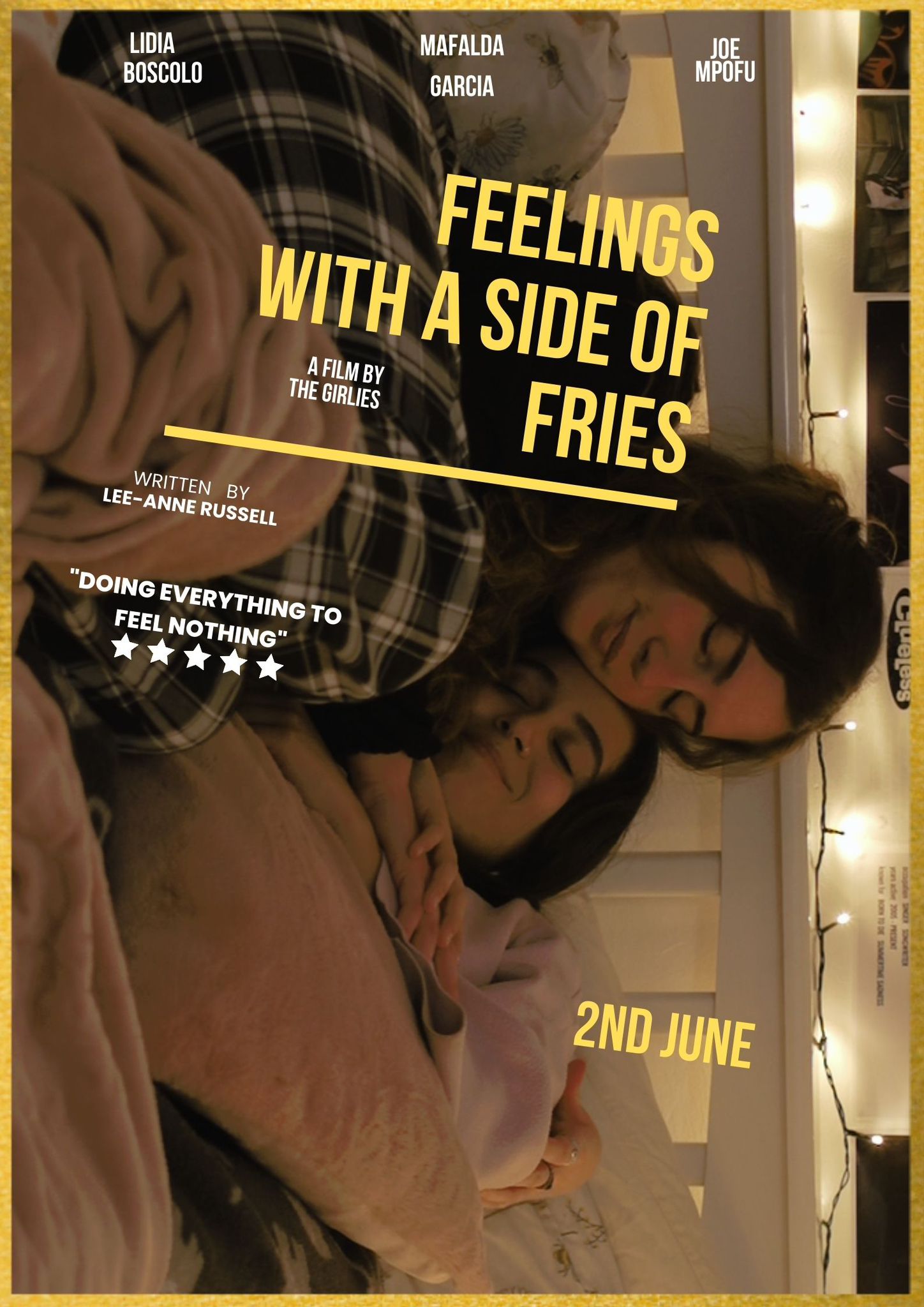 |
| Feelings with a Side of Fries poster [Image: Supplied] |
As one sits through her ‘debut’ film, Feelings with a Side of Fries, it’s hard to believe that it came life as a school project for her final-year at Portsmouth University.
The ten-minute dramedy—a story that equally balances the elements of comedy and drama, often dealing with grounded characters and situations/comedy derived from dramatic moments—follows the story of Leah (played by Malfada Garcia), a 20-something-year-old girl who is battling her first heartbreak.
She then goes on a hilarious but earnest quest to eradicate her ability to feel any type of emotions ever again. With the help of her best friend Solana (played by Lidia Boscolo), the two girls encounter the strangest and quirkiest of characters along the way.
 |
| Malfada Garcia (right) and Lidia Boscolo (left) in Feelings with a Side of Fries |
The ‘most oddball of characters’ being just one man, Joe Mpofu – the only male who managed to come to the audition. This ended up being a blessing in disguise, as the British-Zimbabwean seamlessly switched between the greatly varying roles of being the priest, drug dealer, and therapist – which accentuated the hilarity and plot development of the short film.
 |
| Joe Mpofu (left), as The Priest, alongside Malfada Garcia (right) [Image: Supplied] |
Feelings with a Side of Fries is one of just five films made by the Class of 2023, from a class of thirty-plus students. This reflects Russell’s distinguished screenwriting skills and admirable intrepidness – her prolificacy and abundant mindset being illuminative features of her creative work ethic.
“For the school project, I had a couple of ideas in my head that I wanted to execute. It was simply a matter of picking which one could be executed within a ten-minute runtime,” she said.
So, why go for Feelings with a Side of Fries? What’s special about it?
“I picked this script [Feelings with a Side of Fries] because it was about heartbreak and the power of friendship to get you through hard times,” answered Russell. Almost as if exhibiting the artist’s innate, classic quest to unravel the meaning, salience, and repercussions of inter-and-intra-human interactions and relationships, with hope for respite.
***
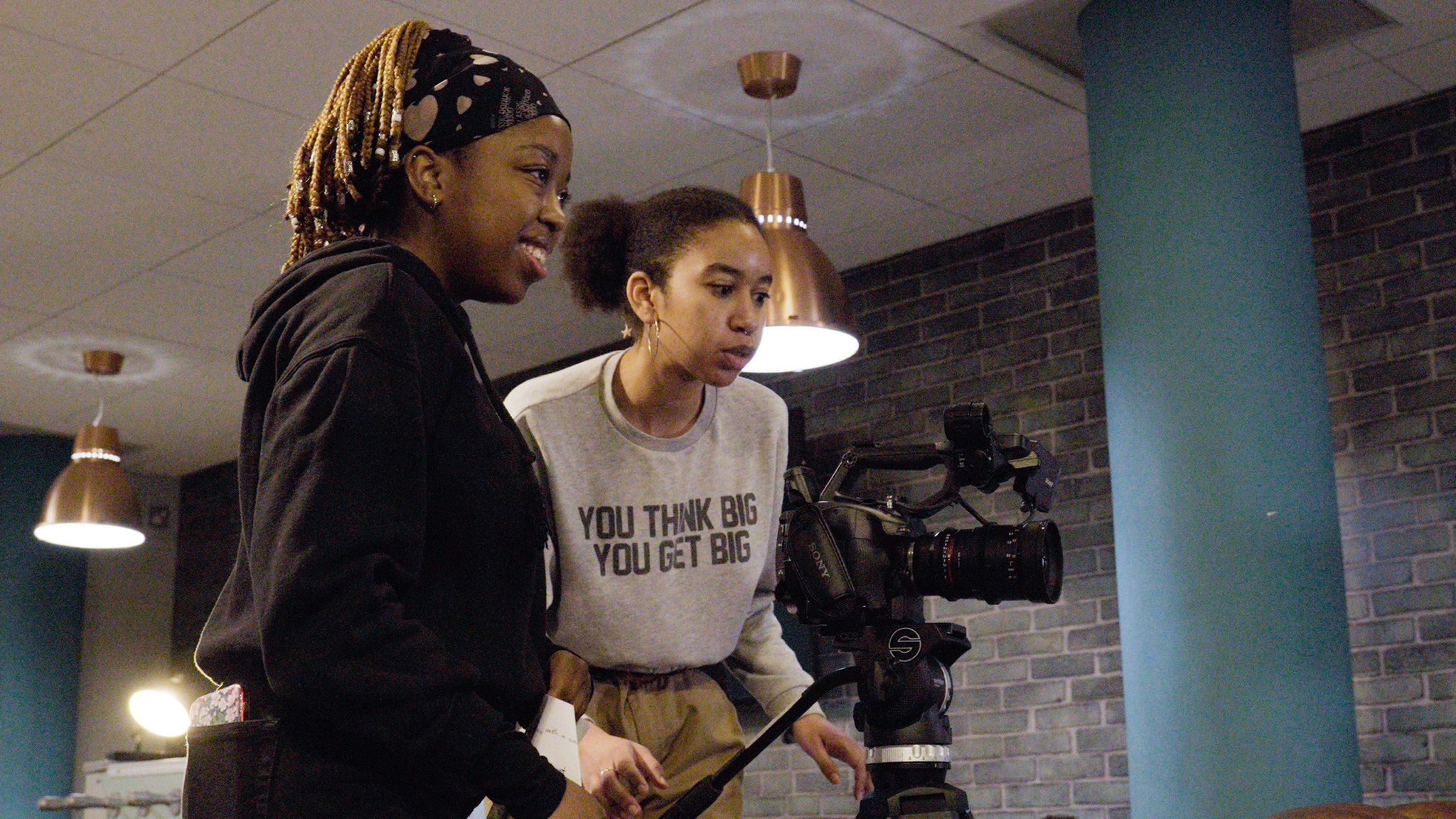 |
| Lee-Ann Russell (left) and cinematographer Estela Ndjoli Gonzalez [Image: Supplied] |
The production phase saturated with passion – We aren’t amateurs here, please; maybe we might just wing it in some instances, but hey, it’ll obviously come out really nice ...
If the cast of three glittered in front of the camera, it was the crew of four girls that made it possible. Cinematography was done by Estela Ndjoli Gonzalez, while the editing is the work of Lashay Lamond. Dash Dashti did the arduous job of sound editing, which was actually her first time. She ended up lending her hand for the set design, at which she displayed her natural talent. She holistically transformed Lee-Anne’s college room (designed of course with the simplicity of an educational institution setup) into a cute, alluring, and inquisitive bedroom fit for a girls’ comedy.
 |
| Cast and crew at the premiere of Feelings with a Side or Fries |
Production for Feelings with a Side of Fries took a demanding ten months, where both the crew and cast were brought to the limits of their motivation and creativity.
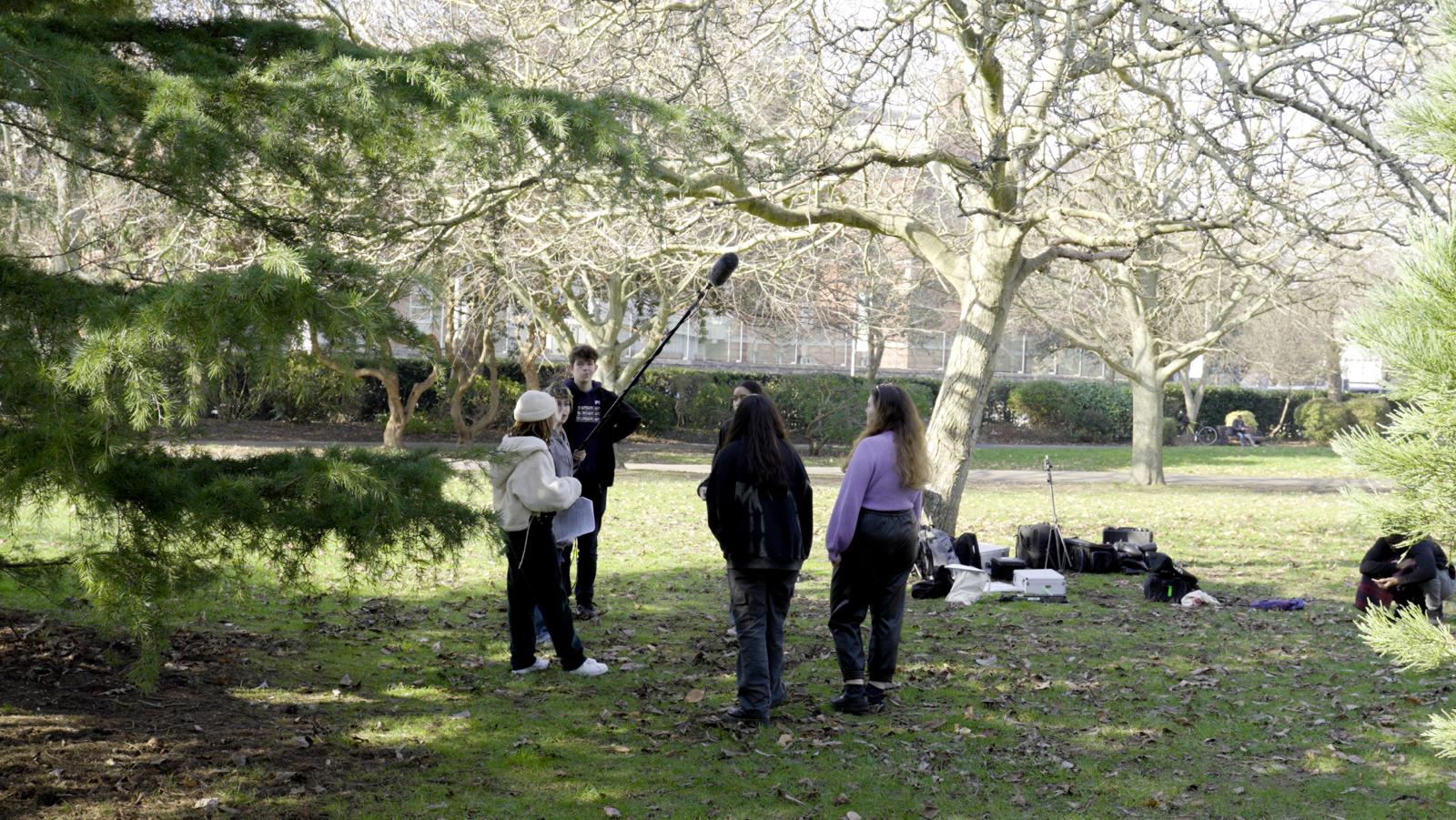 |
| Rehearsals for the park scene [Image: Supplied] |
The creation of this masterpiece was not without seemingly insurmountable hurdles. Birthing cultural products from scratch will always be a daunting task. From the onset, it seemed as if the odds were stacked heavily against Russell and her team. Yet they had to bring this script to life.
Russell’s supervisor for her project had initially warned her that the idea was ‘too big’ to be a ten-minute film. We’re grateful that ‘The Girlies’ (as the crew fondly call themselves) paid no mind to the academic’s stringent rubric of following the scholastic rules to the bone—they simply followed the big, untamed wishes of their hearts; and went ahead with production in a manner that felt satisfactory for them.
During the arduous production, locations for some of the scenes proved difficult to access sometimes. To pull off the church scene, Russell and crew had to approach an excess of 15 cathedrals in Portsmouth. That’s a lot, really. They got rejected by almost all, mainly because the scene appeared to make priests the subjects of unfettered satire and crass ridicule.
 |
| Church scene |
It took a last gasp call from a priest at St Agatha Cathedral to make the scene possible. Miracles do happen.
Ultimately, what kept the cast and crew unites in their motivation, drive, and gusto to complete the film was the astute leadership of Lee-Anne Russell, and her rare ability to bring the best out of people.
This is revealed by her directorial approach, which she aptly describes in the following way:
“As a director, I allow people the space to be who they are. I can notice where you’re really good at and I’m like ‘do more of that, keep going in that direction!’”
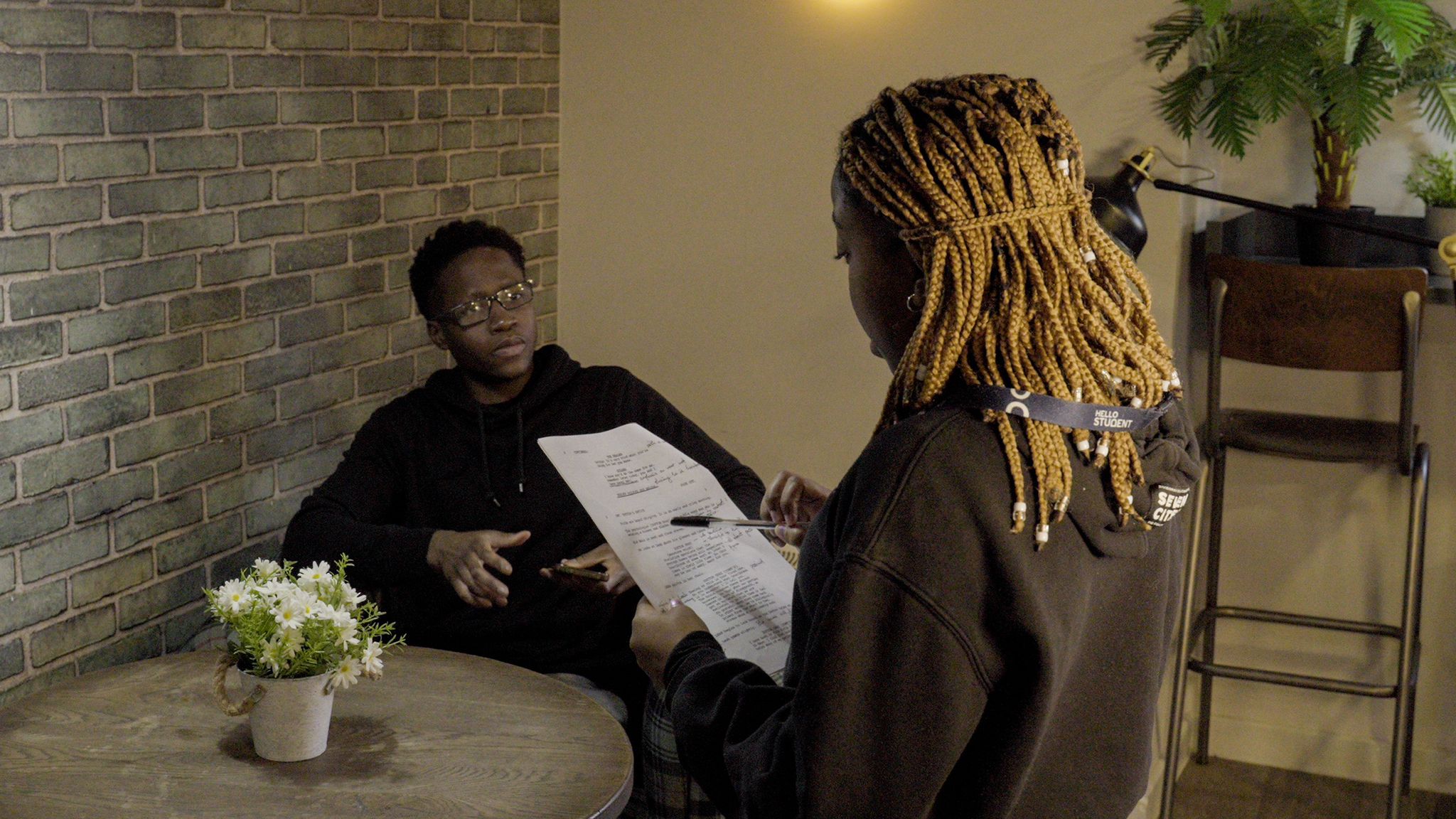 |
| Director Lee-Ann Russell (right) and Joe Mpofu (left) on set |
Feelings with a Side of Fries is a top-notch directorial effort which stands firm on even better screenwriting. Regardless of its small stature. But for all its laudable aspects, it is not without its flaws.
Russell understands that the sound quality may be the easiest thing to fervidly critique about Feelings with a Side of Fries, but she promptly puts up mental barricades to shield herself from how such critiques may taint her perspective of what she regards as her splendidly brainy ‘first child.’ Definitely her first love as far as bringing to life cultural products is concerned.
“There were parts of the film where people might not clearly hear what’s being said, but I think we all start somewhere so for me, its okay.
“You can’t be too perfectionistic in this industry or else you won’t put anything out,” she declared.
***
After all is said and done, home is where the heart is
Home will always remain a permanent fixture in the conscious and subconscious mind of every human being. But in creating Feelings with a Side of Fries, Russell didn’t necessarily have her homeland as a perennial mainstay in her mind—she was rather focused on making her film relatable to a diverse audience; yet without depriving the film certain elements from home.
Resonance, clearly. Local had to meet global. And global had to meet local. An unstable intersection, so to say.
No room for an insipid script, nor for a frigid cast and crew. This had to be an imaginative, colourful, and vibrant artistic exercise.
 |
| Writer-director Lee-Ann Russell at the premiere of Feelings with a Side of Fries |
And as such, the foremost question that Lee-Ann Russell kept asking herself throughout the creative process was, “Is my message reflecting?”
She intimated:
“Heartbreak is a very common thing and the romance of friendship is something a lot of people can relate to. So that’s what I wanted to give to the audience - relatability.”
The script in itself takes inspiration from Russell’s own personal experiences, as well as her being.
“The script reflects who I am. I am someone who can adjust well to different cultures. I think that’s what my film was trying to emulate - that it can appeal to anyone, same as me,” she explained.
In addition to the pains of passion that we all go through as humans, Feelings with a Side of Fries also contains a couple of Easter eggs made for everyone.
For the football fans, there’s mention of Kylian Mbappe(who the actresses didn’t even know) and of course, Sister Bethina, from the famous Mgarimbe song.
“If you know, you know. If you don’t, you don’t,” quipped Russell.
However, do not be misled to believe Lee-Anne Russell is far removed from where she came from. In fact, quite the opposite. A song by a Bulawayo artist named Shekinah The Music, titled Sorry, featured prominently in the film.
.jpg) |
| Lee-Ann Russell at the Bulawayo Theatre |
*****
Home will always be a big deal for many souls in distant lands—a concrete, material fact that can never be wished away, but ought to be graciously and candidly interrogated, maximized, and embraced.
“I try to put a piece of home in everything I do, and everywhere I go,” alludes Russell.
Well, for a school project this is the best she could do to rep her homeland, but for a not so distant future, Russell plans to do much more.
“One of my big goals is to be a financier of the Zimbabwean film industry. To be a platform creator, and create opportunities for others,” she says.
Now that she is done with university and looking forward to the rest of her life, Lee-Ann Russell plans to juggle her day job and her passion, promising to deliver another production before the end of 2024.
“I am hoping to collaborate more with other creatives, hopefully my fellow Zimbabweans,” Russell concludes.
Final Thoughts
In just ten minutes, and for the purposes of graduation; Lee-Anne Russell has given us an elucidative glimpse into the present and future state-of-affairs of Zimbabwean filmmaking, and the input of young creatives.
And, a fundamental realization hastily surfaces to the fore—nothing is going to be easy with this art; filmmaking, for most Zimbabwean creatives,will be a gruelling, strenuous, and sweaty creative foray. But it is all worth it. The art should be properly narrated and celebrated.
This is what Russell tells us: she is committed to tell her stories in a manner commensurate with her sharp-witted artistic drive and mentality.
 |
| Graduation day |
“If you don’t like the content that you’re seeing, then go and create the type of content you would like to see, I feel like that’s what I’m doing.
“I would like to create films that I would like to see and tell stories that I would like to hear,” Russell articulates.
Well if Feelings with a Side of Fries is content that Lee-Ann Russell would like to us see, then it’s a good headstart. Bestowed with impeccable writing, a keen eye for talent, and a global perspective, Lee-Ann Russell has the potential to deliver impactful productions to an audience in desperate need of refreshing content.
*****
Our conclusion? We need more of indie films. And Zimbabweans should pay close attention to good art presented in front of them
Feelings with a Side of Fries passes for a perfect indie film, rather than just a school project.
It gives us present and futuristic views of what can be achieved in the often-ignored realm of indie filmmaking. Especially in the context of Zimbabwean filmmakers abroad collaborating with those at home, in mutually beneficial ways.
So, no two questions about this—we’ll be keenly watching the story of Lee-Ann Russell with razor-sharp focus and intent.
Because if you’re an ardent student of history, you’d know that Zimbabwe’s independence would not have been possible without the emergence of the diaspora, who got exposure overseas – and came back home to enlighten their people with the knowledge they gained.
This year, we mark 44 years of Independence, with roughly five million of us learning toiling for a livelihood in distant lands far from home; uprooted from the comforts of the motherland.
In the same manner that our forebears struggled valiantly for liberation from different parts of the globe, the diaspora definitely has the capability to do more for our own cultural products and consciousness, going beyond the obligatory function of sending remittances.
The diaspora has the massive potential to positively aid the development of artistic and cultural industries – creative industries – whose far-reaching impact to shape society can be seen in the countries they relocated to; and help take Zimbabwe from pariah state to gem of Africa.
It’s undeniable—controlling the narrative is central to that thrust, though not a stroll in the park. A people’s identity, collectiveness, and belonging is reflected in their own stories.
Stories have the ability to shape narratives, alter perspectives, and define popular culture. Film is crucial to this end. All art is.
This is why in the national socioeconomic development discourse, film and television cannot be disregarded, or forgotten. Its role to emancipate minds is severely understated.
(Tragically, its role to poison minds is overstated, with deleterious effects.)
Hence, we settled on the understated brilliance of Russell’s short film in this write-up to bring these fundamental points to light.
Yes; the engineer will build that bridge, the doctor will keep you healthy, the economist will predict the next economic boom; but ultimately, they’ll all want to wind down to the filmmaker’s work. And learn or thing or two to stay inspired.



.jpg)


.jpg)










0 Comments